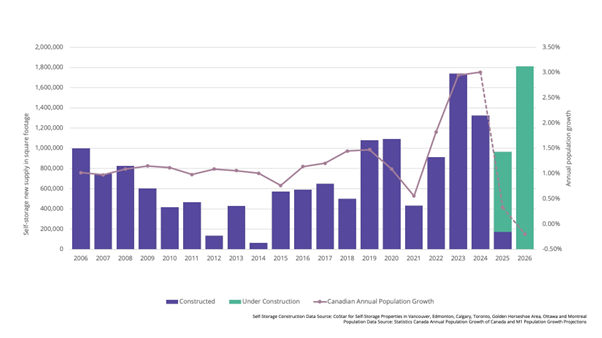A surprisingly resilient area of the commercial lending market is strengthening further

The Canadian self-storage market is poised for a big increase in activity, with new supply expected to double year over year in 2026, according to a report by commercial real estate firm Avison Young. The growth trajectory mirrors Canada’s recent population increases, highlighting a close link between demographic trends and demand for storage facilities.
The report observed that the market began experiencing a pronounced rise in supply between 2021 and 2024. This uptick corresponds with years of population growth that have spurred the need for additional storage options. As of 2025, a significant volume of self-storage projects is under construction, signalling continued market momentum heading into 2026.

Several demographic and societal factors are fuelling the demand for storage space. Among them is Canada’s ageing population, with many older adults opting to downsize their homes. “Canada’s rapidly aging population tends to down-size their living situation,” the report noted, contributing to increased demand for places to store belongings no longer needed in smaller residences.
Migration patterns have also played a key role. Both international newcomers and interprovincial movers have turned to self-storage facilities as transitional spaces while they settle into new homes. The report pointed out that “increased mobility from international and interprovincial migrants has necessitated space to store possessions while resettling.”
Affordability pressures in the housing market have further influenced the trend. A growing number of new residential developments feature smaller apartment units, a shift driven by rising housing costs. This reduction in living space has left many Canadians seeking off-site storage solutions. As the report explained, there is “a trend toward smaller average apartments in new builds, driven by affordability pressures.”
However, the federal government’s recent immigration policy changes may affect future supply and demand dynamics. The decision to impose stricter immigration limits is likely to slow population growth, posing a potential challenge to the sector’s continued expansion. Despite this, the report suggests that other persistent factors—such as downsizing trends, housing size reductions, and labour mobility—may sustain demand for storage facilities over the long term.
What are your thoughts on the recent findings? Share your insights in the comments below.



